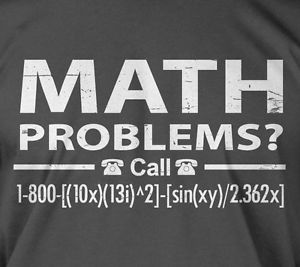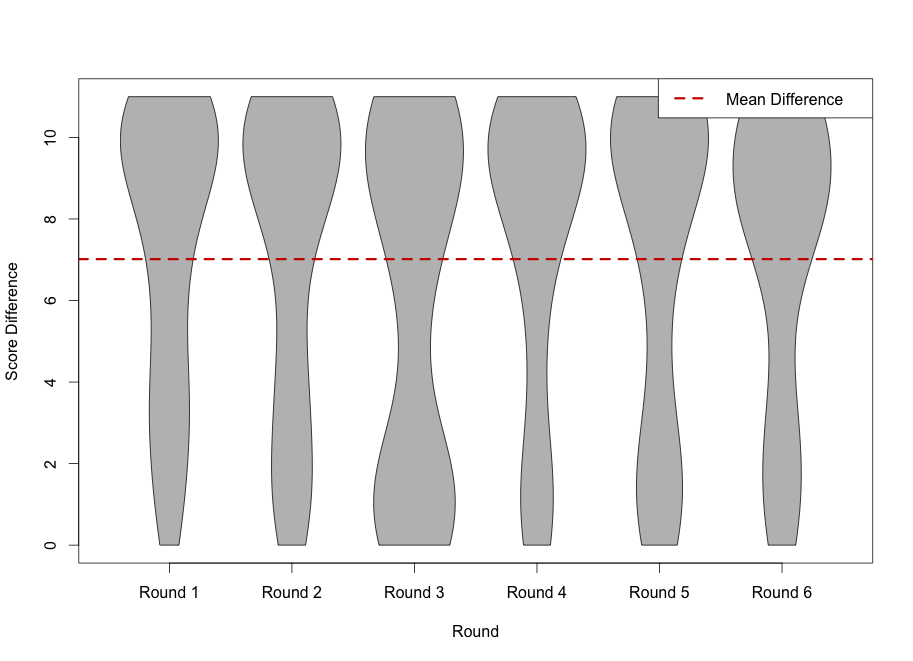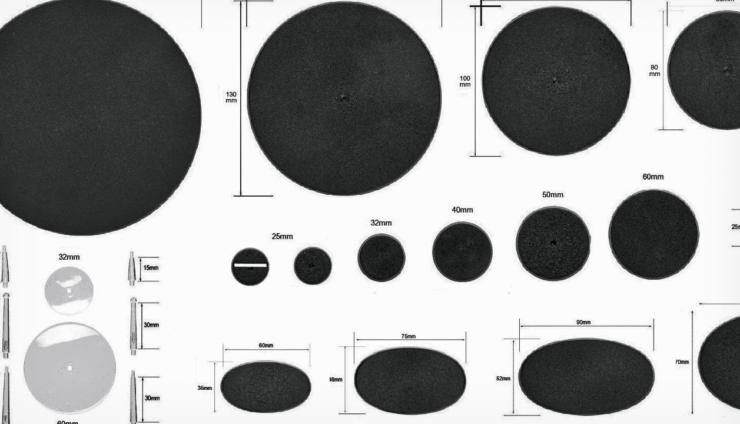Come check out a guest article from the guys over at variance hammer on late round tournament games, and Swiss scoring!
So after reaching out to the good folks over at Frontline Gaming, I have indeed gotten some more detailed data from the Las Vegas Open. One of the analyses I have planned is a bit of a beast, so rather than wait for that to be finished, I thought I’d put up a little side thought I had: How are the scores in tournament games distributed? Do they get closer in later rounds?
Read on to find out.
This post was a little bit inspired by another blog musing about how to prevent really ugly first-round match ups in fun/narrative tournaments, because nobody wants to start their day of a friendly even by getting their teeth kicked in. I may have some more detailed musings on that later, but it prompted another, more fundamental question: What does the distribution of round-by-round scores actually look like? Is a tournament dominated by nail-biters, or blowouts?
One might think, because of the way Swiss pairing works, that the scores narrow over time. The first round should be all over the place as lower-tier players (yours truly) get matched up with people who have the chance to go all the way, etc. But later rounds are matching up people with similar scores – presumably those games should be somewhat tighter. This potentially has a big influence on the way you plan for a tournament: if the scores narrow over time, the relative contribution of early rounds to a player’s score is greater, making early morning games more important to carry. In this way it would work a little bit like the adaptive scoring system for the GRE test one takes to get into graduate school in the U.S. – the first few questions are massively influential on your score, while the last are at best going to change things by a point or two. This would also have implications for those tournament players who enjoy an adult beverage the night before, and might not be at their best for the first few games.
But, as it turns out, this is not the case.
To look at this, I took the difference in scores between paired opponents, broken up by round, for the first six rounds of the LVO. The later rounds were small, and largely determining the winner from a much smaller pool, so I threw them out. Here’s what those differences look like:
Lets break this figure down a little bit. The odd shape for each round is the distribution of the differences in scores in that round – fatter areas indicate more games fell into that category. So, for example, that big bulge around 10 in round one? Indicates that a large number of the round one games had a total difference in scores between the players of 10. And overall, that’s a pretty consistent trend – every round has a hump at the “blowout” end of the spectrum, while really only Round 3 has a substantial number of tight games, where the difference in scores is quite close. Also interesting is that the “average” score (a ~7 point difference) actually happens quite infrequently: the average tournament game never really happens.
What’s this mean? First, that those who are dragging a bit in the early morning need not worry so much – there’s not a significant trend for narrowing scores as the day goes on. It may also mean that the multiple mission objectives from the ITC aren’t working as intended. For those who are curious:
-
Players score each mission in the ITC Scenarios separately, which then generate Mission Points to determine who wins the scenario.
-
The Dawn of War and Maelstrom missions are worth 4 Mission Points if won, 2 mission points to each player if the mission is tied, and 0 mission points if the mission is lost.
-
Each Bonus Point is worth 1 Mission Point. This generates a score of between 0-11 Mission Points.
The preponderance of 10 and 11 point differentials in the results indicates that, generally, the army that carries Dawn of War is also carrying the Maelstrom missions and picking up bonus points. If the intention of the different objective types are to have different armies claiming different aspects of the mission, followed by a showdown to see if being stronger in one area or another is enough, that seems to only happen in a minority of games.
Alternately, it could simply mean that tournament-level Warhammer 40K isn’t actually a game that produces close results, but is rather dominated by a “go big or go home” paradigm where there’s always a very clear winner. There are likely other explanations that I’m not seeing at the moment, and I’d be interested to hear them. Determining which is the case is, in the immortal words of any number of academic papers, left as an exercise to the reader.
Variance Hammer’s ad-free content is provided through the generosity of our Patreon sponsors. If you’ve enjoyed what you’ve read, and want to support the creation of new, quantitatively-driven Warhammer 40K content, please consider joining them.
For more great articles check out our tactics corner!
Come check out the newest member of our ITC Terrain series, The Shield Generator!











